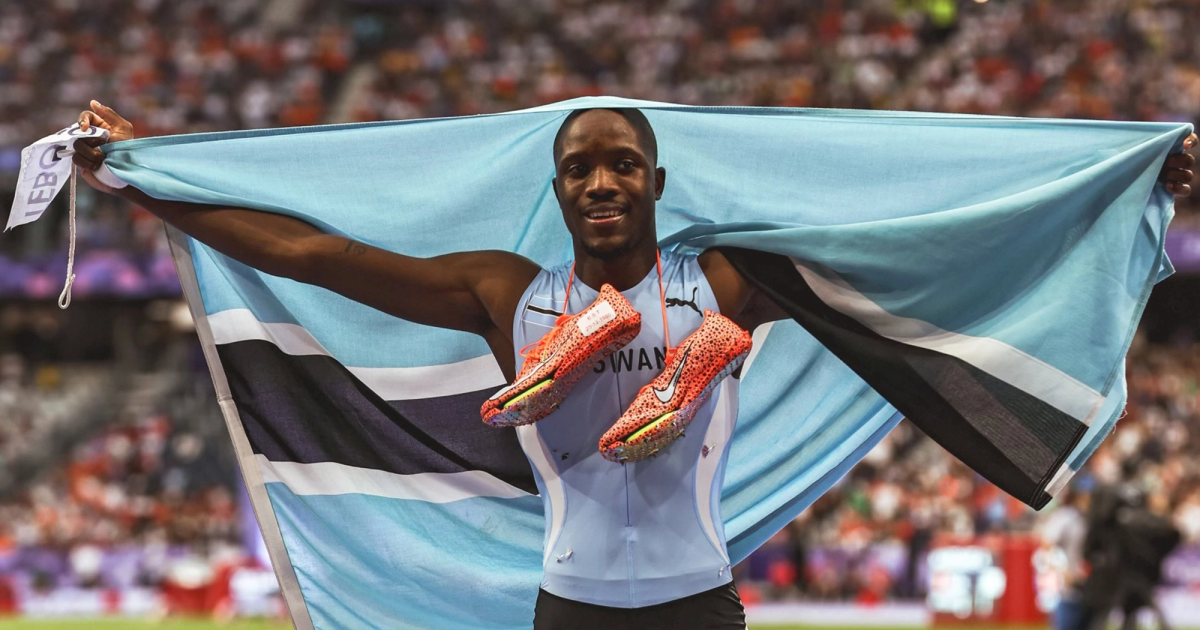By Paul Snyder
November 13, 2024
A video posted to YouTube last week shows reigning Olympic 100m champion Noah Lyles beating YouTuber Darren Watkins, a.k.a “Speed,” in a 50-meter race. Lyles took home $100,000 for about five seconds of medium-effort running. YouTube megastar Mr. Beast was also there, dressed as a referee and baring his teeth. The video – which is 39 minutes long – has been viewed millions of times.
If that lead paragraph was basically Greek to you, just know that this was probably the most attention Noah Lyles has received since the Paris Olympics. And between all those eyeballs and the nice six-figure payday, it’s natural to assume this was purely a good thing for Noah Lyles. Lyles, who embraces his self-crafted anime villain persona, easily won the race in what looked like second gear (unsurprisingly for anyone who gets their takes from this newsletter and not YouTube comments). And in the process, he put himself in front of the 33 million subscribers to Speed’s channel for far longer than an NBC highlight reel.
Even if the bulk of those millions of viewers don’t let the name Noah Lyles stick in their brain for more than a few seconds, surely at least a handful will be curious enough to look up videos of more legit Lyles races, right? Well… it’s possible, but not likely. They’re more likely clicking over to more vaguely titled contest videos, not to Olympic replays or six full episodes of SPRINT.
That’s because traditional sports coverage exists within an entirely distinct ecosystem from the modern influencer and YouTuber. It’s pretty damn rare for something from one sphere to break containment and enter the other. After watching any amount of the Lyles vs. Speed video, were you – a track person visiting YouTuber World – motivated to dive head first into Speed’s channel? Were you so charmed by Mr. Beast that you spent the rest of the work day watching his videos?
That ambivalence likely cuts both ways. Take another look at the comments under the video. The prevailing sentiment isn’t awe over Lyles’s almost otherworldly speed. It’s Speed fans noting the closeness of the race while ignoring the fact that it was only 50 meters long, and talking about how if Speed trained seriously he could likely be the fastest man on the planet!

It’s hard to see how that narrative helps the sport of professional track and field break through to new audiences. To Speed fans, Noah Lyles was basically a prop their favorite YouTube personality used to prove his athletic bonafides. Speed will put out another video in two weeks and his fans will forget about Lyles just as quickly.
So while Lyles may have walked away from this experience pleased with the outcome – he has 100,000 reasons to be – we’re not banking on millions of brand new young, enthusiastic track nuts storming the scene as a result. That’s not to say it’s impossible to reach young would-be sports fans. Nor should the sport abandon video as a means of showcasing track and field and its personalities to uninitiated audiences.
There’s an important distinction between Noah Lyles racing a popular – but random – video game streamer as opposed to, say, Tyreek Hill. As much as it chafes us metric-system purists to hear foot speed boiled down to a 40-yard dash time, track athletes racing NFL stars (and vice versa) is a much more promising model because it includes both a massive new audience and shared interest: sports. Shameless self-promotion has a better chance of moving the needle if the natural endpoint is “more track on ESPN,” not a seismic apples-to-oranges shift in platforms, formats, and fan bases.
Breaking out of the Olympic cycle and onto television sets, TikTok algorithms, and social media discourse is an admirable goal. But before track and field stars can realistically aim to bring in new viewers from a totally unconventional direction, let’s double down on some of the more winnable ones. While Gabby Thomas might pick up a few followers by going on Call Her Daddy, she’ll probably have a better shot at bringing in lifelong fans by running drills at a USWNT soccer practice. When we’ve squeezed the juice out of all the more popular sports, we can start thinking outside the box – but in the meantime, let’s have every second-team All-American sprinter break the NFL combine record one after another until they stop showing it on Sports Center Top-10.

Paul Snyder
Paul Snyder is the 2009 UIL District 26-5A boys 1600m runner-up. You can follow him on Bluesky @snuder.bsky.social.




